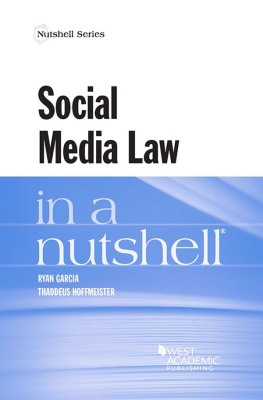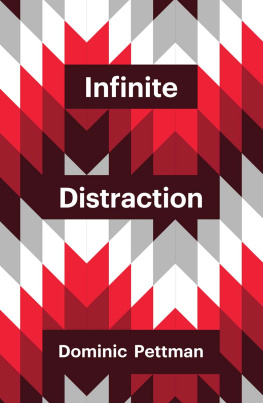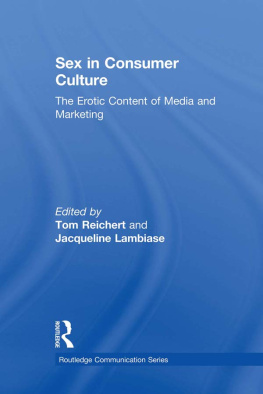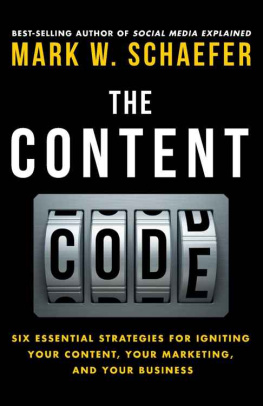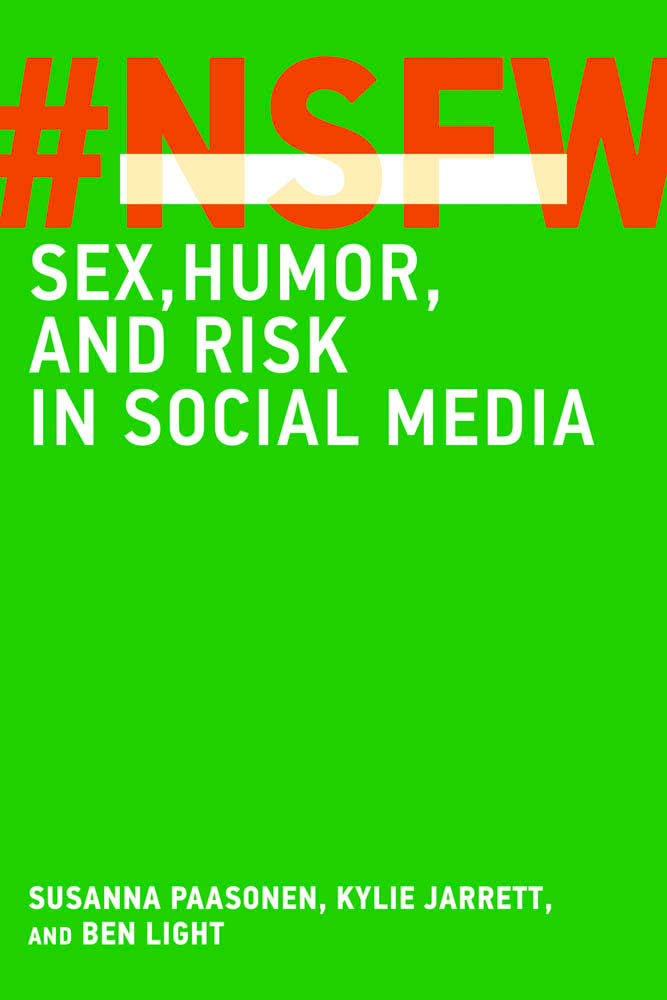
NSFW
NSFW
Sex, Humor, and Risk in Social Media
Susanna Paasonen, Kylie Jarrett, and Ben Light
The MIT Press
Cambridge, Massachusetts
London, England
2019 Massachusetts Institute of Technology
All rights reserved. No part of this book may be reproduced in any form by any electronic or mechanical means (including photocopying, recording, or information storage and retrieval) without permission in writing from the publisher.
This book was set in Stone Serif and Stone Sans by Jen Jackowitz. Printed and bound in the United States of America.
Library of Congress Cataloging-in-Publication Data is available.
Names: Paasonen, Susanna, 1975- author. | Jarrett, Kylie, author. | Light, Ben, author.
Title: NSFW : sex, humor, and risk in social media / Susanna Paasonen, Kylie Jarrett, and Ben Light.
Other titles: #Not safe for work
Description: Cambridge, MA : The MIT Press, 2019. | Includes bibliographical references and index.
Identifiers: LCCN 2019001446 | ISBN 9780262043052 (hardcover : alk. paper)
Subjects: LCSH: Computer sex.
Classification: LCC HQ23 .P33 2019 | DDC 306.70285--dc23 LC record available at https://lccn.loc.gov/2019001446
10 9 8 7 6 5 4 3 2 1
ISBN: 978-0-262-04305-2
Retail e-ISBN: 978-0-262-35524-7
Library e-ISBN: 978-0-262-35523-0
MITP e-ISBN: 978-0-262-35522-3
d_r0
Contents
We would like to thank the scholarly community of the Association of Internet Researchers both for bringing the authors together a decade or so ago and for facilitating dialogues on the topic of this book over the years. In particular, we would like to thank Nathan Rambukkana, Jenny Sundn, and Katrin Tiidenberg for contributing to our NSFW panel at the 2017 Association of Internet Researchers conference in Tartu, Estonia, and the audience of that particular sessionincluding, but not limited to, Crystal Abidin, Tarleton Gillespie, and Michael Petitfor their comments and suggestions. Part of the initial planning of this book was made possible by Susannas 20152016 sabbatical grant from the Jenny and Antti Wihuri Foundation, which also made it possible to discuss the early stages of the project with the Microsoft Research New Englands Social Media Collective in the spring of 2016.
We would like to dedicate this book to Britney Spears, whose live performance of Work Bitch in Las Vegas, October 28, 2015, culminated the writing retreat during which we coined our book prospectus.
The Internet slang term and social media tag NSFWNot Safe/Suitable for Workis widely used in Anglophone contexts (and beyond) to organize and regulate sexual content and pornographic imagery, often in connection with humor. The online information resource Know Your Meme has tracked the emergence of NSFW to the social news aggregator site Fark in the year 2000. On Fark, the disclaimer Not safe for work. Not safe period first accompanied a link to the Stile Project, a site famous for its galleries of gross-out imagery, shock porn, and explicit violence. The term was gradually adopted on Usenet, and, by 2005, websites were dedicated to NSFW content (Know Your Meme 2013). As a classifier, NSFW resonated among newsgroup users before becoming applied by commercial platforms and growing ubiquitous within social media as both a warning and a lure.
Coined before the rise of Web 2.0 and the era of personal portable devices, the tag points to content not assumed safe for consumption, or indeed production, in workplaces and in the context of work, independent of what these may be. At the heart of NSFW lies the notion of unsafety connected to the risk of losing ones job or social status, yet, as we argue in the chapters to follow, it also extends to an unspecified sense of risk in connection with sexually explicit media content and sexual communication more generally. Unlike media content markers such as sexually explicit content, NSFW does not identify the representational properties of the images, posts, or video files to which it is primarily applied. Rather, the tag marks sexuality, pornography, and a range of bodily displays as lacking in safety in a markedly abstract, and hence obscure, vein. A similar decontextualized application of the notions of safety and risk where these are reduced to properties of specific media content is evident, for example, in Googles SafeSearch mode, which seeks to exclude sexually explicit hits. This practice of conflating safety with the filtering of sexual content both builds on and bolsters an understanding of sex and sexuality as inherently risky, potentially harmful, and best hidden away and left unmentioned. Our interests lie in unpacking the logics within which this conflation occurs and in offering alternative ways of understanding the distribution of safety and risk connected to social media.
As we shall show, given the tags virtually exclusive uses in the context of sex, other forms of content that for good reasons can be deemed risky or problematicsuch as those connected to sexist harassment and racial violencereadily fall outside its reach (see also Tiidenberg, n.d.). This is striking, given that these forms of communication are considered unsafe at/for work in the sense of being addressed by specific harassment and equal opportunity policies. Meanwhile, excessively violent content is occasionally, albeit much less routinely, tagged and bracketed out with the related term NSFL, Not Safe for Life, on platforms such as Reddit (Massanari 2015, 132). The limitations of what falls under the rubric of NSFW media then raise particular questions about the kinds of cultural work being done by this labeling.
Despite, or perhaps precisely because of, its connotations of risk, NSFW is also intimately tied in with humor and the quest for diversion, amusement, and titillation. Like the Stile Project, the tag of NSFW appeals as much as it averts, and it titillates as much as it repulses. In the economy of links, shares, likes, and mentions that drive social media, NSFW content is both risky in the disapproval and flagging it may evoke and highly lucrative in the eyeballs that it captures and the affective quavers it manages to evoke. Presenting content marked out as risqu, the NSFW tag seeks to generate instant attention value. Furthermore, as Katrin Tiidenberg (n.d.) notes, the choice to heed to the tagto obscure or ignoreis temporary. Its not rejection, but postponement. Warning becomes a promise; apprehension morphs into excitement. That is, if certain content is not considered suitable for viewing at work, it can be viewed during a break, on a personal device, or after working hours and thus can be treated as something to look forward to.
Underpinning these considerations is the broader sense that work can be made unsafe when it intersects with social media. NSFW, in its association with data flows tapping into the dynamics of attention and attraction, contributes to that which Jodi Dean (2009, 26, 2010) defines as communicative capitalism. The excessive flow of posts and messages in networked digital systems creates potential risks of unwanted exposure and reputation management, just as it allows for the expansion of sexual expression, political commentary, and humorous exchanges. The rapid diffusion of Internet-enabled mobile devices and the penetration of the workplace with both personal and occupational information mean that these diffuse data flows have become deeply entangled with what we do at work and how we do it. Organizations and individuals aim to manage the tensions that this intersection produces, and especially those that occur when personal communicative styles and contents meet the more controlled spaces of work. At the same time, social media can allow for greater agency, and indeed safety, through the horizontal communication channels evading organizational control that it provides for coworkers and colleagues. Consequently, the marker NSFW not only highlights particular kinds of social media content but also draws our attention to the interconnections of sex, humor, and risk within labor environments.
Next page



